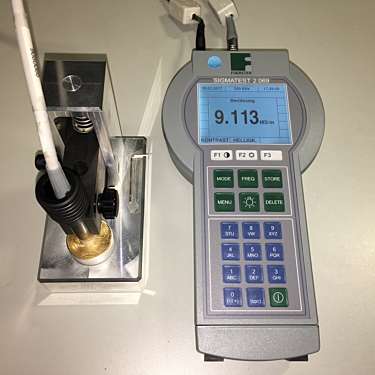Detection of Fake 20 mark Kaiser Wilhelm Coins

Visual detection of fakes: Left: genuine coin; Right: fake coin.
Image credit: © Bundesbank/Roland Zils
The minting of counterfeit coins has a long history. For circulating, base metal coins, the aim of the forger is to produce a coin that can pass for the real thing in terms of its weight, appearance and even possibly something approaching the correct alloy composition. The forger’s profit comes from the fact that the face value of such coins is generally much greater than the value of the metal from which they are made. When this is not the case, such coins tend to disappear, whether legally on the part of the authorities or illegally on the part of criminals, as in most cases, it is forbidden to melt the coin of the realm. This could have happened with the UK’s pre-decimalization penny coins. These hefty coins weighed in at 9.45 grams and were made from an alloy containing 95% copper. With a copper price of just over $3 per pound in September, 2020, the theoretical profit from melting such coins (if you could find them) would be enormous:
- 1 tonne of coins would amount to 105,820 coins which at 240 to the pound would cost £440.
- the value of the contained copper would be £4,950.
The penalty for undertaking such a criminal enterprise is not known!
Turning to precious metal coins, the possible criminal motives of the counterfeiter are manifold:
- exploiting the ignorance of unsophisticated buyers by producing a gold-plated facsimile coin made from a base metal;
- money-laundering, for instance based on stolen gold; or
- capturing the numismatic value of rare coins.
In the Bundesbank book, Germany’s Gold, an example is given of the latter stratagem, involving the German 20 mark Kaiser Wilhelm coins shown here. Careful visual examination of the counterfeit coins reveals tell-tale minting defects. Fake coins using less dense metals as the core can easily be detected using Archimedes principle. Fakes based on tungsten, whose density is almost identical to that of gold, can be detected using a magnet, since tungsten is weakly magnetic. Another more precise method of determining that the core of a coin is not made of the correct metal employs eddy currents.
Detail
- Era
- Modern Period
- Related tags


